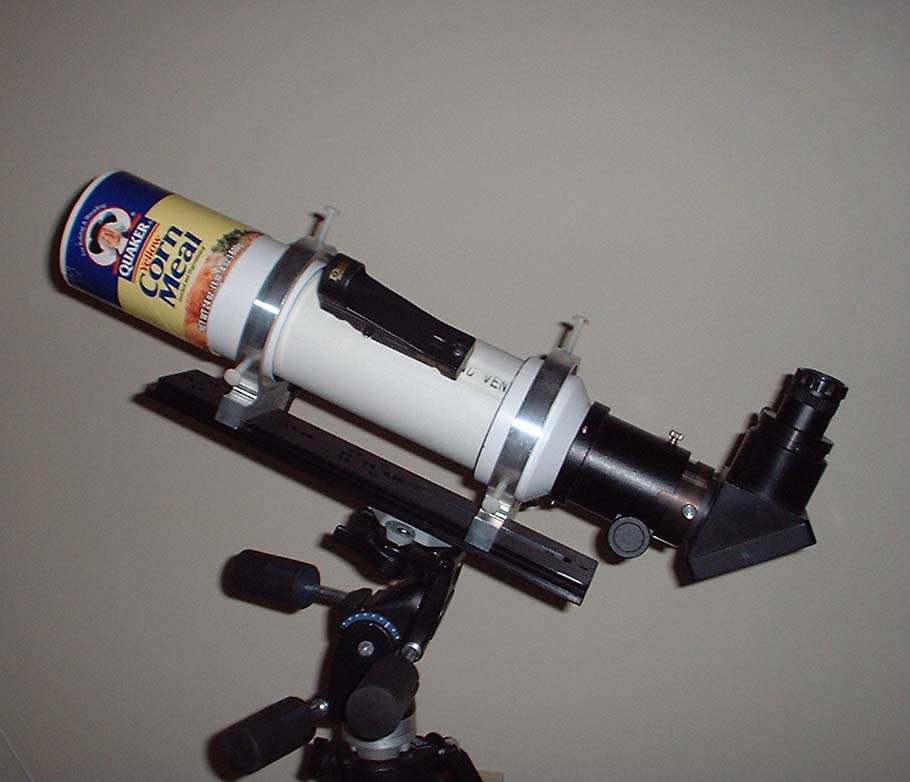
First Light - 1-1-2002
I got a sucker hole for a little while so I was able to get "first light" with the 80/500. I am really impressed with this thing. There was a small amount of color around jupiter and saturn, especially out of focus, but not too bad. Betelguese (sp?) showed nice round difraction rings on both sides of focus after a 20 minute cool down using a 7mm Nagler. I used three eyepieces, a UO 2" 32mm Konig-II, a Celestron 18mm Ultima and a 7mm Nagler yeilding 15X, 28X and 63X respectively. Jupiter and Saturn were very nice although the lack of baffeling caused a "streak" of light from these very bright objects. Saturn was especially nice showing Cassini's division fading in and out and some light banding on the planet. Titan was visible as were three dim moons near the planet. I swung over to Orion and even with a streetlight just below the M42 area some nebulosity was visible. The Trapesium was easily resolved. Moving to Auriga the "Flying Minnow" was easy to find and some sweeping bagged M38 and M36. A final move to M45 showed the impressive cluster filling the field of view at 28X.
Second Light - 1-2-2002
It was pretty clear most of the day so I decided to ride over to Lake Erie Metropark after dinner to give the little scope some more eye time. The Metropark site is darker than my neighborhood but has terrible sky from the northeast to north to the southwest. East and south are not too bad. It was clear when I got there at about 7:15. It did not take very long to set up the tripod and I was off. Jupiter was my first target and I could see a nice display of bands on the planet (2 large dark bands and one small one) I increased the power to 100X with a 4.8mm Nagler and the scope took the increased power just fine. Saturn showed fine detail with a very distinct Cassini division at 100x. M42 showed some nice nebulosity from this darker site at lower power. even with the 4.8 Nagler I could see a lot of nebulosity. After looking for a while I convinced myself that I could see the "E" component in the "Trap". The "F" star was nowhere to be seen in this small scope. I decided to go for the "big one" and insert the 3mm Radian. At 166X ( >50X/inch) things softened up a little. Cassini was still visible but all the edges had lost sharpness. Jupiter showed more color on the fringes and less detail. Seeing was not the greatest as some high hazy clouds were going overhead and I could see the images get worse in the eyepiece.
Back to lower powers to sweep around. M38 was easier to find at this darker site and it was easy to sweep up M36 and M37. M31 was almost straight overhead but I managed to put it in the eyepiece at 27X. It looked great and I could see both companions. Brightly lit clouds were moving from the west so I packed it in at about 8:00. So far I think this scope is a winner!
The Scope - Ready to Use!

Note the BB Gun red dot finder and the "Custom" Quaker Corn Meal dew shield.